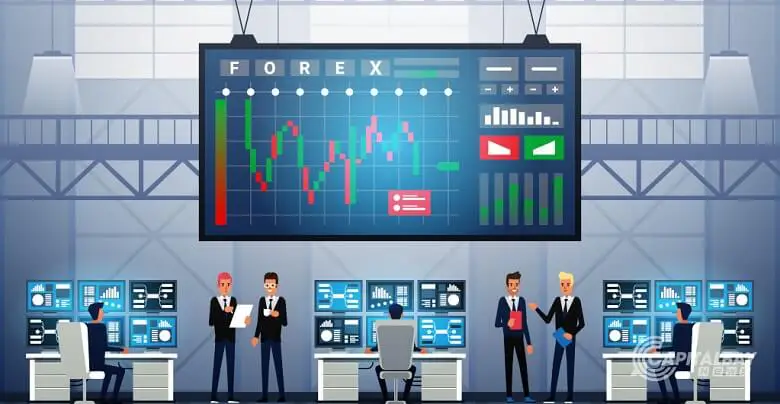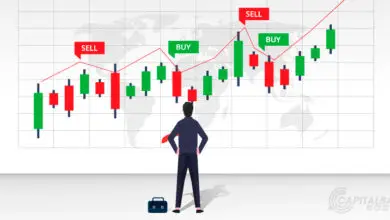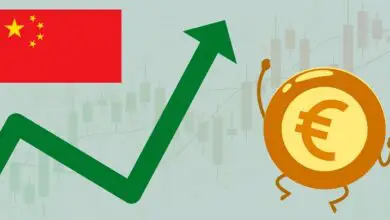Forex Abbreviation and Trading Terms: A Brief Introduction

The Origins of FOREX
For those unfamiliar with the term, Forex (FX) is the market where currencies are bought and sold. The term is the shortened form of foreign exchange market. Investors and traders speculate the direction of a foreign currency in the future. The price at which a foreign currency is traded is called the foreign exchange rate. Precisely speaking, the difference in the trading price of a particular currency determines profit or a loss.
The simultaneous conversion of currencies driven by supply and demand causes rapid price movements. Those trading forex are most likely to benefit from this volatility. However, one needs to be wary of its positive and negative repercussions. Core traders of foreign exchange range from individuals to corporates, making it the largest and most actively traded financial market with a daily global trading volume of over $5 trillion. As a leveraged product there is a high risk associated with currency trading that can result in substantial losses.
What Is the Forex Market?
Unlike traditional financial markets, forex trading occurs in a decentralized marketplace that opens 24 hours from Monday to Friday. This over-the-counter market comprises brokers, banks, and financial institutions. All the forex transactions take place electronically between a network of buyers and sellers. Please note, there is a high level of risk when trading forex on margin.
To be eligible to trade in the forex market, you need to open a trading account with respective brokers or banks, or financial institutions. You should always verify the legitimacy of a broker by checking if it has a license number or not. Also, a reliable broker website speaks to user experience with its execution of orders (all websites with rights reserved to use cookies). It is worth noting that the FX market might behave differently depending on various factors, such as credit ratings and market sentiment. Even, the Central banks play a pivotal role in controlling interest rates, inflation, and the overall supply of their currency. Knowing what the inflation targets are of each Central Bank, and where current inflation rates are in their respective countries, will provide valuable insight into potential price moves.
What Is a Currency or Forex Pair?
 You are probably already aware of the acronyms for the major worldwide currencies, such as usd, Euro, and Sterling Pound.
You are probably already aware of the acronyms for the major worldwide currencies, such as usd, Euro, and Sterling Pound.
In a currency pair, one currency trades against another in pairs also known as a ‘forex pair’ such as USD/JPY. The first currency listed in the forex pair is the ‘base currency’ while the second currency is the ‘quote/counter currency.’
Each forex pair has a price associated with it at which the base currency is traded. There are two ways to trade currency pairs – forex spread betting and contracts for differences (CFDs). Forex pairs are categorized into major, minor, exotic, and regional.
- Major Pair lists the Canadian dollar (CAD), the Great Britain pound sterling (GBP), the euro (EUR), Japanese yen (JPY), Australian dollar (AUD), New Zealand dollar (NZD), and Swiss franc (CHF), all trading against the United States dollar (USD).
- Minor Pair lists all the major pair currencies except for USD that trade against each other such as GBP/JPY.
- Regional Pair lists regional currencies trading against each other such as AUD/NZD.
- Exotic Pair lists a foreign currency from the major pair trading against another currency from a small/emerging economy such as the US dollar and rand of South Africa (USD/ZAR).
Forex also has its own slang like “CABLE” that stands for GBPUSD – the exchange rate between the pound and the dollar and “buck”, a market slang term for one million units of a dollar-based currency pair, or for usd in general.
Forex professionals simply don’t like to use the full term or long words for anything related to the Forex market. Many words are shortened on purpose because events happen so fast and there is no time to read or pronounce long sentences. That is why there are abbreviations Forex is so fond of.
Here’s a list of the most common forex trading abbreviations and acronyms you may stumble upon while trading or reading online analyses. These range from macro-fundamentals and central banks to currencies and technical forex trading terms.
Fed/BoC/BoE/ECB/SNB/RBA/RBNZ/BoJ: These refer to the US Federal Reserve, Bank of Canada, Bank of England, European Central Bank, Swiss National Bank, Reserve Bank of Australia, Reserve Bank of New Zealand, and Bank of Japan, respectively (with rights reserved on data with table of contents on official website).
CCI: Commodity channel index or CCI is a technical indicator used to identify cyclical trends in currency prices over a certain period.
CFA: CFA is an abbreviation for chartered financial analyst, who takes care of all the money on behalf of the trader.
CFD: The contract for difference or CFD is an abbreviation that refers to a financial derivative that allows traders to benefit from the difference in the price of an underlying asset. Trading CFDs on margin carries a high risk and may not be suitable for all investors. Therefore, you should not invest or risk money that you cannot afford to lose.
CPI: CPI or consumer price index is a useful forex technical indicator to measure inflation in a state over a certain period.
CSI: The commodity selection index (CSI) is a technical indicator that helps investors identify the most profitable currency for short-term trading.
ECN: ECN stands for electronic communication network or electronic currency network, which is commonly used by forex brokers to forward client orders to other liquidity providers in the forex marketplace.
EMA: The exponential moving average (EMA) is a technical indicator that analyzes the currency price over a particular period.
EMS: EMS or European Monetary System is an economic measure implemented by the European Community to keep a check on inflation and sharp movements in the forex rate.
ERM: The exchange rate mechanism (ERM) is actively used by central banks of different states to adjust the interstate currency exchange rate.
ETF: Exchange-traded fund or ETF is a collective of financial instruments commonly traded on stock exchanges.
FA: FA or fundamental analysis is used to understand the impact of economic, political, and social factors on the prices of a state’s national currency.
GDP: Commonly referred to as gross domestic product, GDP is a technical indicator that measures the value of all products and services of a country in a year.
GTC: Good till canceled (GTC) is an order that a trader can buy or sell at an agreed price. In case of no trade, the order expires on a predetermined date.
HL: HL is the short form for higher low that occurs when price-corrections push the price lower during uptrends.
IB: IB or introducing broker is a broker that solicits or accepts orders to trade forex.
MACD: Moving average convergence divergence or MACD is a technical indicator used to calculate moving averages.
MT4: MetaTrader 4 or MT4 is an advanced trading platform widely used by investors to trade forex and CFDs.
NDD: Non-dealing desk (NDD) is another trading platform that gives forex traders instant access to the interbank network.
OTC: OTC or over-the-counter stands for the forex market where the foreign currencies are traded.
PIP: PIP or percentage in point that is indicative of the slightest change in the exchange rate of a forex pair.
PP: Usually referred to as pivot analysis, PP enables investors to identify potential support and resistance levels through technical analysis of the currency market trend.
RIA: Retail investor accounts or RIAs are accounts that an individual investor opens with a forex broker or bank, rather than an institution, to trade foreign currency.
RSI: RSI is an abbreviation for relative strength index that analyzes trends in overbought and oversold market conditions.
SAR: SAR is an abbreviation for stop and reverse that allows forex traders to stop the current trade and then restart it in the reverse direction based on market behavior.
SL: Stop-loss order (SL) is a method that protects investors from losing money by stopping an order once it reaches the pre-set price.
SL/RL: S/R, short for support level/resistance level, which indicates price-levels below and above the current market price, respectively.
SLO: SLO or sell limit order defines the time frame in which an instrument is to be sold.
SMA: SMA or simple moving average represents the average price for a currency pair over a certain period.
STP: STP (straight through processing) links client orders to liquidity providers through a broker.
TA: TA refers to technical analysis, which is used by investors to scan potential trading opportunities in the foreign exchange market using price trends and chart patterns.
TF: TF or time frame is the time at which forex trading is scheduled to take place.
TL: Trend line (TL) depicts historical price movements to help traders identify support and resistance levels.
TP: TP is an abbreviation for take profit, which means a forex trader instructs the forex broker to stop the order once the profit money reaches the specified price level.
Conclusion
Forex market professionals extensively use trading abbreviations. Trading foreign currency without knowing forex jargon could make trading confusing and lead to unwanted losses. Therefore, it becomes essential for beginners to be aware of forex abbreviations. Much like other industries, the forex trading industry uses a rich lexicon of technical terms. Professional traders and brokers communicate using these abbreviations because they avoid misunderstandings. They economize time and make life much easier.
The Forex market has many abbreviations and acronyms that might seem intimidating to beginners. But don’t worry if you don’t remember them all at once. Take your time and stay up to date on forex terminology by attending events or reading articles. Remember, failing to do so might cause you to miss out on the potentially profitable opportunity.



